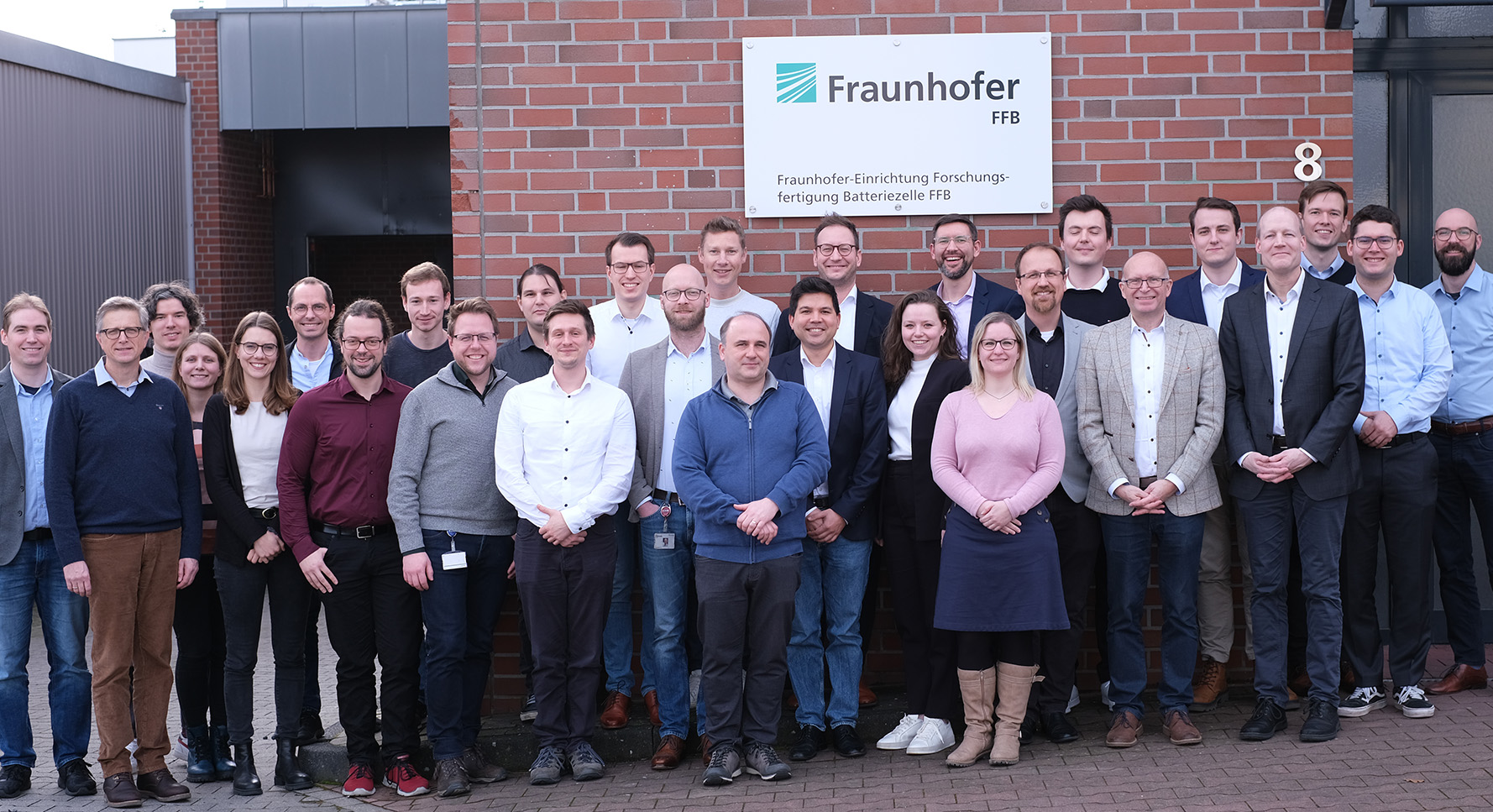Sub-project 4 of the "FoFeBat" project has started
Münster. The Fraunhofer FFB has started the fourth sub-project of the "Research Production of Battery Cells" project ("FoFeBat" TP4). Together with other partners, including the Chair of “Production Engineering of E-Mobility Components” (PEM) at RWTH Aachen University, Forschungszentrum Jülich, Justus Liebig University (JLU) Giessen, the University of Münster and other Fraunhofer institutes, Fraunhofer FFB is working on the integration of key technologies for sustainable and efficient battery cell factories of the future in this research project. Solid-state batteries are taking centre stage.
Alternative manufacturing processes and technologies with a special focus on solid-state batteries
Solid-state batteries use solid electrolytes and therefore differ from conventional batteries, which use liquid or gel-like electrolytes. This makes them a promising new technology compared to lithium-ion batteries. In addition to their innovation potential, solid-state batteries have other potential advantages:
- Higher energy density:
Solid-state batteries have the potential to achieve a higher energy density than conventional lithium-ion batteries, as they could enable the use of new anode technologies such as lithium metal in the future. This means that they can store more energy per volume or weight, which could lead to longer ranges in electric vehicles or longer operating times in other applications. - Improved security:
As pure solid-state batteries do not contain any flammable liquid electrolytes, they are intrinsically safer than conventional batteries. This significantly reduces the risk of fires or explosions and makes solid-state batteries particularly attractive for applications where safety is the top priority, for example in electric vehicles. - Improved cycle life:
Solid-state batteries could have an improved cycle life compared to conventional batteries, which means that they can perform more charge and discharge cycles over a longer period without significant loss of performance. This is particularly important for applications that require high reliability and longevity.
What are the challenges with solid-state batteries?
The challenges lie primarily in the variety of possible materials (polymers, oxides, sulphides) that are potentially suitable as solid-state electrolytes. Although solid-state batteries offer promising advantages, switching the manufacturing processes and environment from conventional lithium-ion batteries to solid-state batteries could be very difficult due to several factors. On the one hand, solid-state batteries often require special, e.g., particularly dry, or inert production environments and clean room conditions to ensure the quality and performance of the batteries. On the other hand, the production of solid-state batteries often requires completely different processes, equipment and materials compared to conventional lithium-ion batteries. This could mean that existing production lines and equipment cannot simply be converted to produce solid-state batteries. The task of the innovation labs is therefore to determine parameters that enable the most efficient production of solid-state batteries.

The project
The research team of the "FoFeBat" TP4 project is tackling the challenges of answering fundamental questions about the production of solid-state batteries and at the same time establishing the necessary infrastructure for this production. Within innovation laboratories, the project is researching alternative production processes and technologies along the battery cell value chain with a particular focus on solid-state batteries. Existing electrolyte systems are synthesised on a large scale and their performance, operating conditions and safety aspects are examined in various cell chemistries.
As part of its innovation laboratories, Fraunhofer FFB is working on optimising the processing parameters of various solid electrolytes. The focus here is on processes for compacting the individual materials and joining the different layers together. In conventional lithium-ion batteries, the electrode layers of the anode and cathode consist of porous composites that are subsequently filled with liquid electrolytes. In a solid-state battery, on the other hand, solid electrolytes and the corresponding solid active materials for the positive and negative electrodes are already mixed and then compacted. When joining the layers together, it is important to minimise the resistance between them by applying pressure and to optimise the contact surfaces. In addition, the operating conditions of the solid-state batteries, such as the temperature and pressure ranges, as well as the charging and discharging speed, are determined to ensure safe operation and the longest possible service life. This includes a safety assessment of the solid-state batteries, which is primarily aimed at evaluating the general safety risks and determining how deviations from the operating conditions could affect the safety of the batteries.
Last modified: